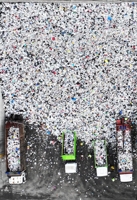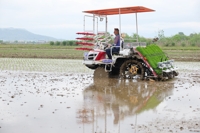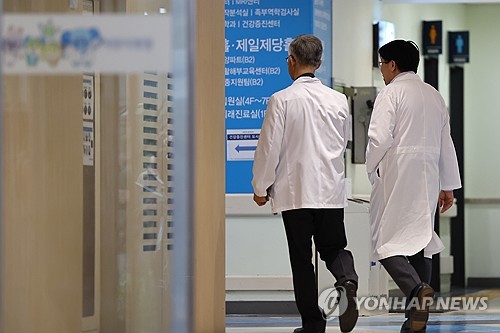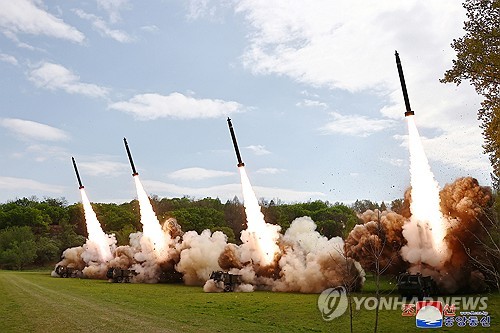(Yonhap Feature) KBO players, coaches trying to come to grips with new ball
By Yoo Jee-ho
SEOUL, May 8 (Yonhap) -- In a Korea Baseball Organization (KBO) regular season game against the KT Wiz on April 12 at Daegu Samsung Lions Park in Daegu, 300 kilometers southeast of Seoul, Samsung Lions' All-Star outfielder Koo Ja-wook launched a deep fly ball to straightaway center.
As Koo ran out of the batter's box, the ball seemed to be on its way over the wall, 122.5 meters away from the plate. And about halfway to second base, Koo raised his right arm in celebration of what he thought was a home run.
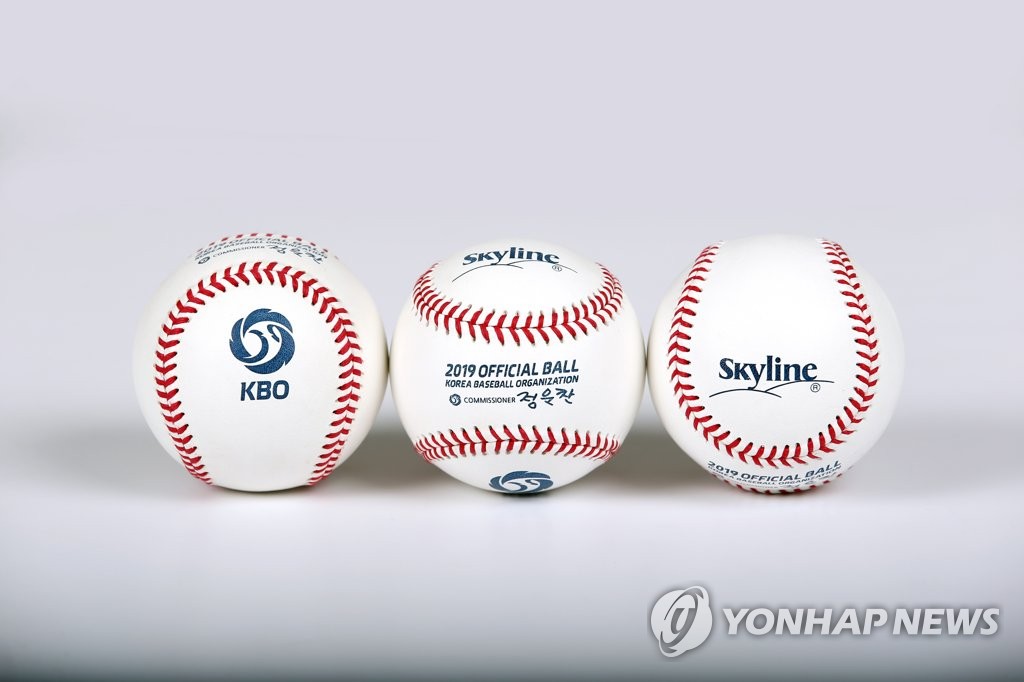
This file photo, provided by the Korea Baseball Organization on March 10, 2019, shows the new official balls for the 2019 season. (Yonhap)
KT's center fielder, Mel Rojas Jr., had other ideas. Unbeknownst to Koo, Rojas made a leaping catch at the wall. Koo, who by now had broken into his home run trot, didn't learn of his fate until after making the turn at third base. Once his third base coach, Choi Tae-won, told him what had happened, Koo hung his head and covered his face with his hands in embarrassment as he trudged back to the dugout.
There are two lessons to be learned from this play. One, never prematurely celebrate a home run, because you're only tempting the Baseball Gods. And two, remember that the KBO's new ball doesn't fly quite as far as the previous ones.
Welcome to the new KBO, Version 2019, where would-be home run balls get caught at the fence or fall short on the warning track.
Since the start of the new season on March 23, offensive numbers have taken a dip across the board compared with the same period a year ago.
Through May 5, 178 games have been played in the league, and 277 home runs have been hit by the 10 clubs so far, with 1,746 runs scored. They're slugging at a .396 clip.
At roughly the same point last year, with 175 games in the books through May 5, the teams had hit 404 homers and scored 1,838 runs, with a slugging percentage of .442.
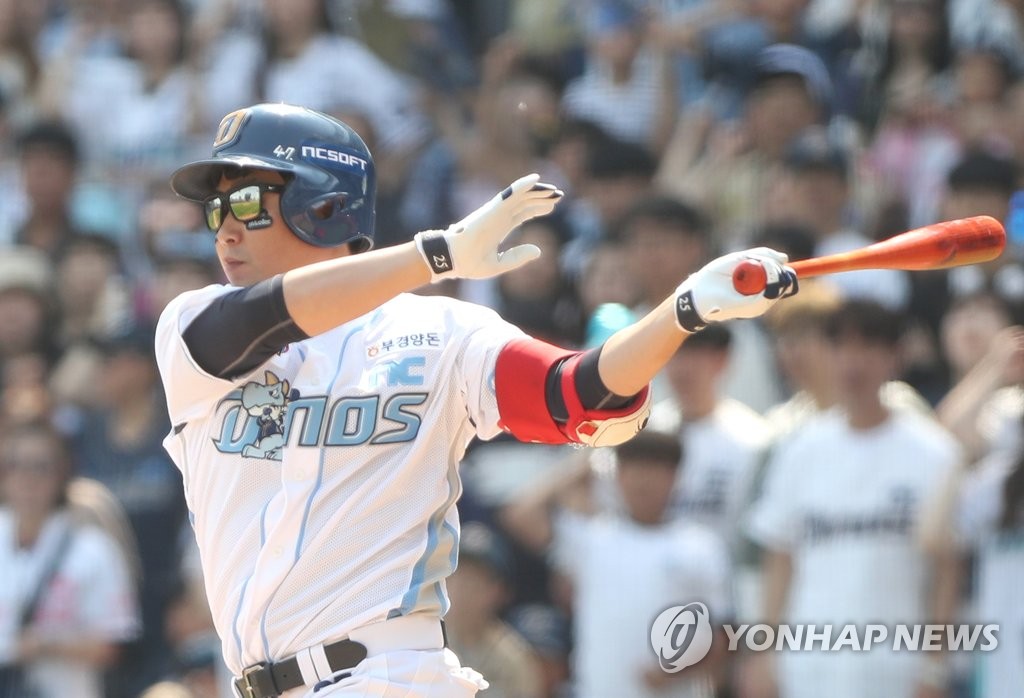
Yang Eui-ji of the NC Dinos hits an RBI single against the Kia Tigers in the bottom of the second inning of a Korea Baseball Organization regular season game at Changwon NC Park in Changwon, 400 kilometers southeast of Seoul, on May 5, 2019. (Yonhap)
Last year, a record five KBO sluggers surpassed the 40-homer plateau, and the teams combined for 1,756 home runs, surpassing the single-season record by more than 200. On May 5, 2018, seven hitters had reached double figures in home runs, led by 15 from SK Wyvern's Choi Jeong.
This year, Yang Eui-ji of the NC Dinos is the league leader in home runs with eight, followed by six hitters with seven apiece. No one is on pace to reach 40 home runs in 2019.
So why has there been such a precipitous decrease in power numbers? Have these hitters suddenly gone bad?
About a month and a half into the season, the new official ball has been cited by several players and coaches as the main culprit for the drop in offensive production. The new ball is heavier and larger with a smaller coefficient of restitution (COR), or the ratio of the ball's relative speed after collision with the bat to its relative speed before collision. In layman's terms, the lower COR means less bounce off the bat.
Up until last year, the KBO's ball was allowed to have COR figures between .4134 and .4374. In Japan's Nippon Professional Baseball (NPB), the range is between .4034 and .4234. It's even lower for the ball in Major League Baseball (MLB), with a range between .3860 and .4005.
For 2019, the KBO lowered its ball's COR numbers to match those in NPB.
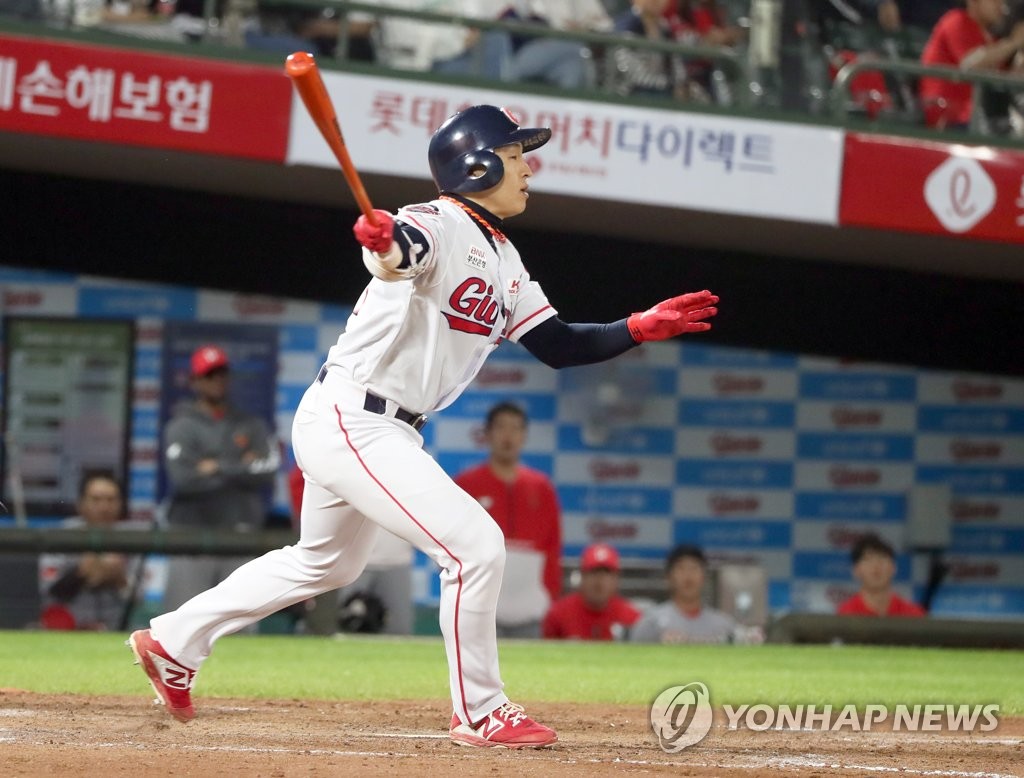
Son Ah-seop of the Lotte Giants takes a swing during a Korea Baseball Organization regular season game against the SK Wyverns at Sajik Stadium in Busan, 450 kilometers southeast of Seoul, on May 3, 2019. (Yonhap)
Though they aren't able to offer scientific data to prove the new ball's impact on the downturn in offense, hitters say they can feel the ball doesn't jump off the barrel of the bat the way previous balls did. Managers and coaches claim a lot of balls that they felt would have left the park in the past have died on the warning track this year.
If that's indeed the case, then the KBO's decision to adopt the new ball is having its desired effect.
There were several reasons for the switch. With teams piling up runs, the games were dragging on, and the KBO wanted to speed up games and hold the explosive offense in check.
Also, the league wanted to better prepare its hitters for international competitions, where balls have similar COR figures to those used in MLB and NPB. Sluggers who routinely belted out 30 or more home runs in the KBO have struggled to go deep in recent international events where balls were less lively off the bat. South Korea, once the darling of international baseball with its deep runs at the two first editions of the World Baseball Classic (WBC) in 2006 and 2009, hasn't made it out of the preliminary round in the past two editions, in 2013 and 2017, The WBC is operated by MLB, and the tournament's ball is made to the exact specifications of the one in the big leagues. So why not make these hitters face a similar type of ball over a 144-game season in the domestic league?
Whether this will pay off in the long run internationally remains to be seen. For now, players and the coaches alike are still trying to come to grips with this change.
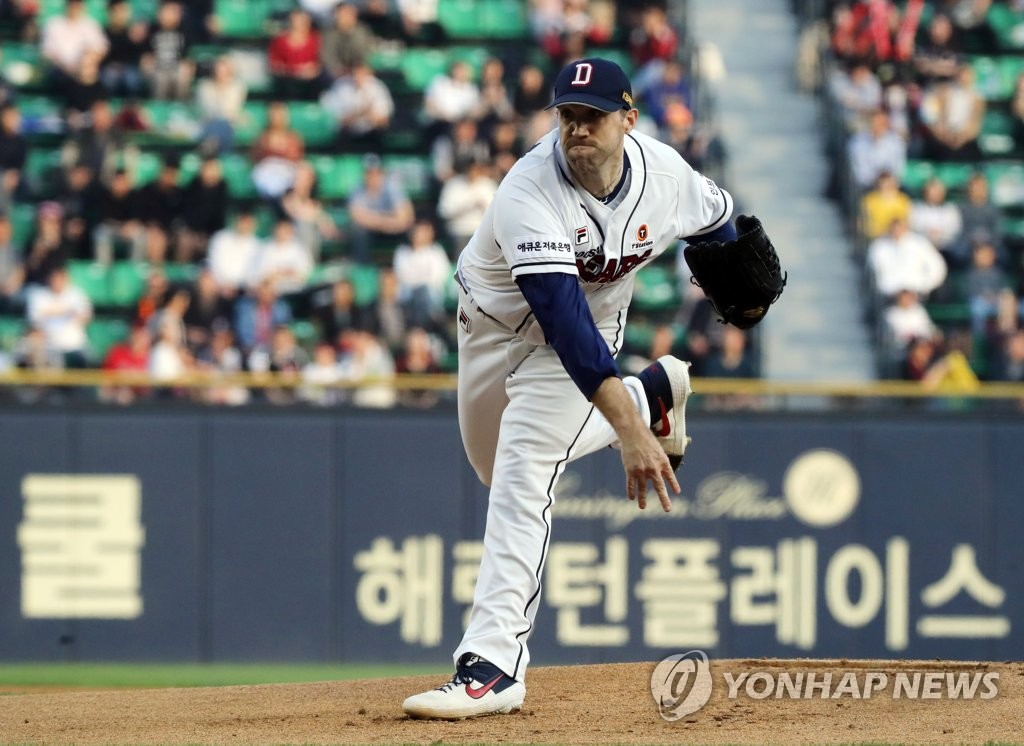
Josh Lindblom of the Doosan Bears throws a pitch against the LG Twins in a Korea Baseball Organization regular season game at Jamsil Stadium in Seoul on May 3, 2019. (Yonhap)
"Obviously, Rojas made a great catch but I think a ball hit that hard last year would have cleared the fence easily," Lions' manager Kim Han-soo told reporters about Koo's loud flyout. "I think balls are clearly not traveling as far as before."
Jang Jung-suk, skipper for the Kiwoom Heroes, said he has heard his players say that the ball doesn't go nearly as far. He said the switch will separate the cream of the slugging crop from the rest of the bunch.
"The true power hitters will still keep driving balls over the fence, and I think other players will struggle more," Jang told reporters. "But all 10 teams are playing with the same ball, so we'll just have to keep playing the game the same way."
Among players, Lotte Giants' outfielder Son Ah-seop said the new ball sounds and feels different coming off the bat.
Son, a three-time hit king who's second among all active players with a lifetime .324 batting average, knows a thing or two about making contact with the ball. And he has noticed some difference in the sound.
"Until last year, you heard the loud thwack at contact, but the sound is somewhat duller this year," Son said.
Son also said the less jump off the bat has also affected outfield defense, with outfielders now having to try to make a catch at the wall or the warning track on balls that would have left the park in the past. And in an April game, Wyverns' center fielder Kim Kang-min, still considered a strong defender at age 36, misjudged the flight of a ball so badly that he let it drop in front of him for a double.
But there are those who refuse to blame the decrease in offensive production on the new ball. They instead point to the unusually early start to the regular season, which left hitters with less time to prepare and exposed them to colder weather conditions earlier in the season.
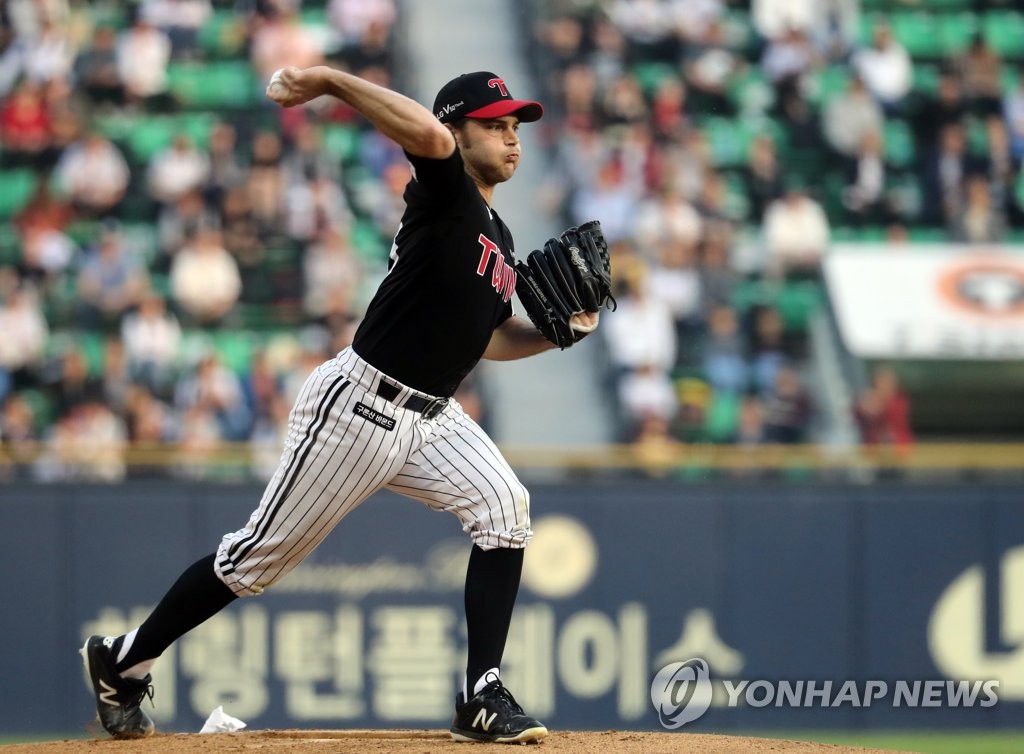
Tyler Wilson of the LG Twins checks the runner at first base in the bottom of the first inning of a Korea Baseball Organization regular season game against the Doosan Bears at Jamsil Stadium in Seoul on May 3, 2019. (Yonhap)
There were only eight preseason games, tied for the fewest ever, and the regular season began on March 23, the earliest Opening Day in the KBO's 38-year history. With South Korea scheduled to host the preliminary round of the Premier 12, an Olympic qualifying tournament, in November, the KBO wanted to ensure the playoffs would end by the late October, at the latest.
And the weather remained unseasonably cold across the nation through the early part of April.
"I think it's been due to cold weather, not the COR of the new ball," said Chae Eun-seong of the LG Twins, who set a career high with 25 home runs in 2018 but is stuck at two this season. "Hitters have had a hard time getting into a groove because it was too cold early in the season."
Jang, the Heroes' manager, offered a similar sentiment.
"As the season goes on, pitchers will tire, and hitters will find their rhythm," he said. "I think the bats will eventually come alive."
We may already be seeing that wave. Over the first eight days of the season, covering 40 games in total, the teams scored 386 runs and slugged at a .386 clip. In the most recent eight-day, 40-game stretch from April 27 to May 5, 409 runs crossed the plate and the teams had a .407 slugging percentage.
Lost in the hoopla surrounding the new ball is how well pitchers have performed this season. You can change the ball all you want, but pitchers will still have to execute their pitches.
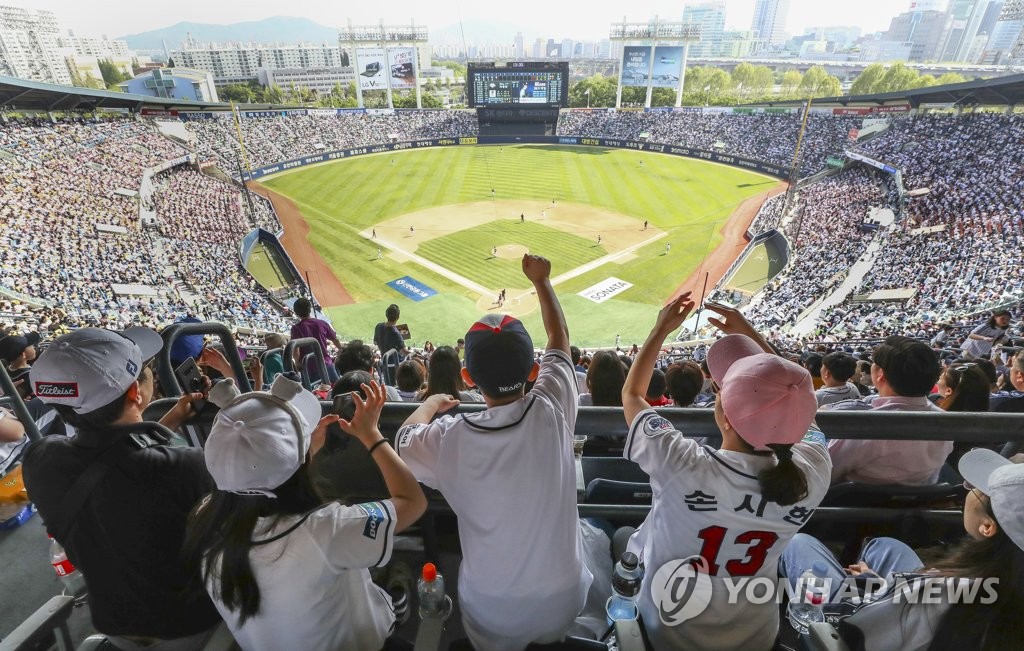
Fans attend a Korea Baseball Organization regular season game between the home team Doosan Bears and the LG Twins at Jamsil Stadium in Seoul on May 5, 2019. (Yonhap)
Four starters had an ERA under 2.00 through May 5. At this time last year, two hurlers were in the sub-2.00 ERA club but only one, Josh Lindblom of the Doosan Bears, finished the season with an ERA below 3.00, at 2.88.
This year, Lindblom is leading the way again at 1.54. He has overtaken Tyler Wilson of the LG Twins, who saw his ERA balloon from 0.57 to 1.57 in one bad outing last weekend.
At least for Wilson, the ball doesn't appear to have had much of an impact either way. Wilson said he was "indifferent" to the changes in the ball and added the difference from the previous ball "is ever so subtle."
Pitchers as a whole are throwing more sliders and sinkers this year than last, which have led to weak contact. The usage rate for the slider is up from 20.8 percent to 22.1 percent, and for the sinker, it's gone up from 7 percent to 12.7 percent.
Count Brooks Raley, who has shaken off a rough start to his fifth season for the Giants, among pitchers happy to see the switch to the new ball. He has trimmed his ERA from 6.52 at the end of March to 3.54 through last weekend.
"If it can turn down the offense a little bit, I am all for it," the American left-hander said.
jeeho@yna.co.kr
(END)
-
 Overdue debut of Korean abstract art pioneer Yoo Young-kuk at Venice Biennale
Overdue debut of Korean abstract art pioneer Yoo Young-kuk at Venice Biennale -
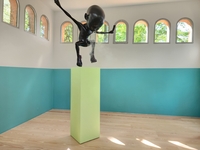 Relax, immerse yourself in scents at Venice Biennale's Korean Pavilion
Relax, immerse yourself in scents at Venice Biennale's Korean Pavilion -
 S. Korea marks 30th anniv. of Korean Pavilion at Venice Biennale with contemporary art
S. Korea marks 30th anniv. of Korean Pavilion at Venice Biennale with contemporary art -
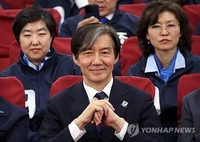 Ex-Justice Minister Cho slams Yoon's statement on crushing election defeat
Ex-Justice Minister Cho slams Yoon's statement on crushing election defeat -
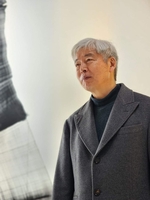 Artist Lee Bae captures ethereal Korean aesthetics at Venice Biennale
Artist Lee Bae captures ethereal Korean aesthetics at Venice Biennale
-
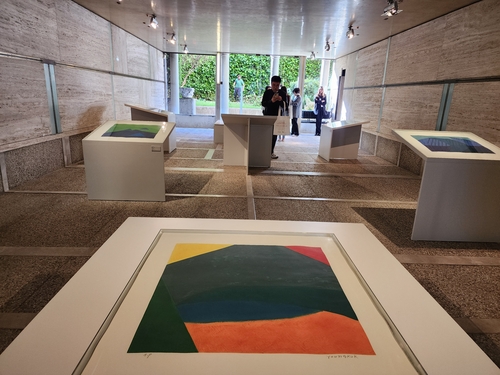 Overdue debut of Korean abstract art pioneer Yoo Young-kuk at Venice Biennale
Overdue debut of Korean abstract art pioneer Yoo Young-kuk at Venice Biennale -
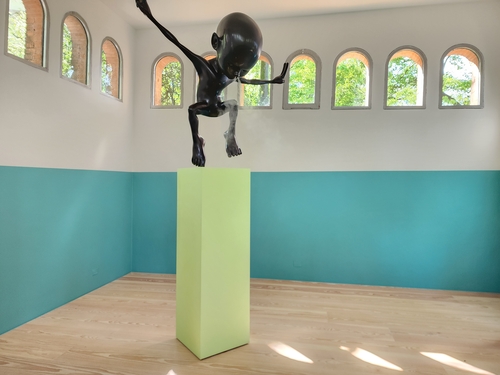 Relax, immerse yourself in scents at Venice Biennale's Korean Pavilion
Relax, immerse yourself in scents at Venice Biennale's Korean Pavilion -
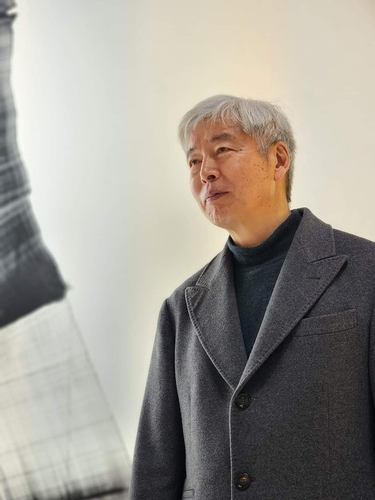 Artist Lee Bae captures ethereal Korean aesthetics at Venice Biennale
Artist Lee Bae captures ethereal Korean aesthetics at Venice Biennale -
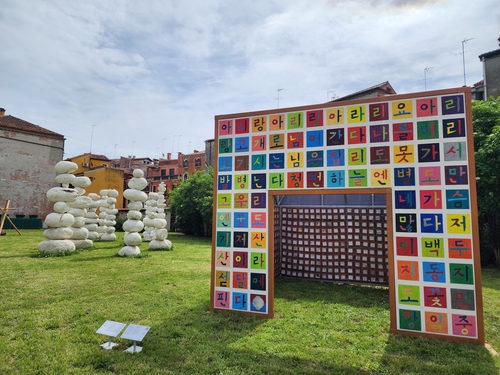 S. Korea marks 30th anniv. of Korean Pavilion at Venice Biennale with contemporary art
S. Korea marks 30th anniv. of Korean Pavilion at Venice Biennale with contemporary art -
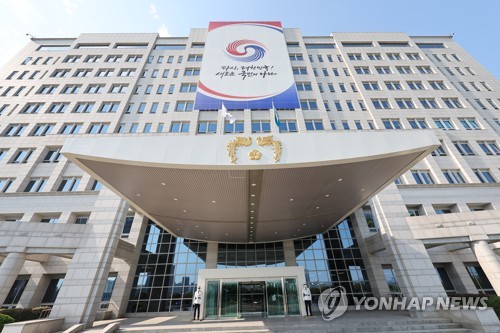 (LEAD) Presidential office denies Moon aides under consideration for PM, chief of staff
(LEAD) Presidential office denies Moon aides under consideration for PM, chief of staff
-
 Hybe says spinoff attempt by subsidiary label revealed clearly
Hybe says spinoff attempt by subsidiary label revealed clearly -
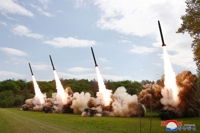 (LEAD) N. Korea says Kim guided simulated nuclear counterattack drill
(LEAD) N. Korea says Kim guided simulated nuclear counterattack drill -
 Hybe launches audit into NewJeans' label ADOR over alleged independence move
Hybe launches audit into NewJeans' label ADOR over alleged independence move -
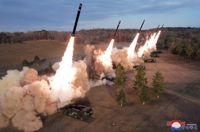 N. Korea says Kim guided simulated nuclear counterattack drills for 1st time
N. Korea says Kim guided simulated nuclear counterattack drills for 1st time -
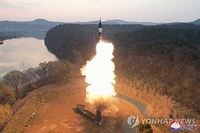 (LEAD) N. Korea fires several short-range ballistic missiles toward East Sea: JCS
(LEAD) N. Korea fires several short-range ballistic missiles toward East Sea: JCS


















